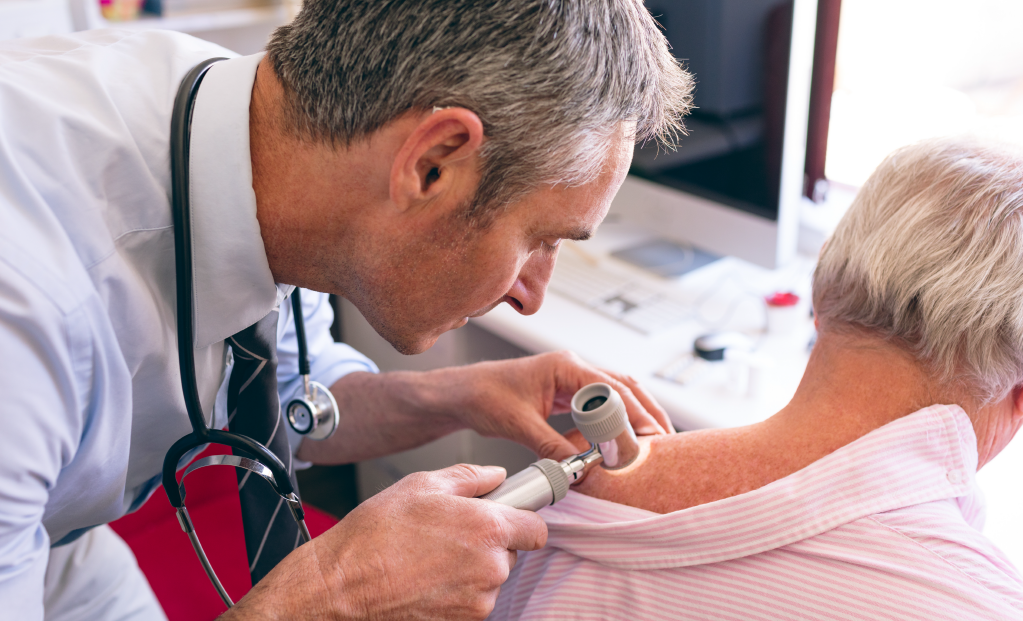Skin Cancer Prevention and Awareness Month
During the month of May, skin cancer prevention and awareness is celebrated with the goal of educating the population on the importance of skin care. According to the National Cancer Institute and the Centers for Disease Control and Prevention (CDC), skin cancer is the most common type of cancer in the United States.
Each year, about 4.3 million adults are treated for carcinoma. During 2018, nearly 84,000 people were diagnosed with melanoma, of whom more than 70% were people older than 55 years. That same year, more than 8,100 people died from melanoma.
Types of Skin Cancer
Skin cancer is a disease in which the cells of skin tissues become malignant or cancerous. Skin is the largest organ in the body and its function is to protect us from heat, sunlight, injury and infection. It helps us control body temperature and stores water, fat and vitamin D. Since skin has several layers, there are several types of skin cancer. The main ones are the following:
- Squamous cell carcinoma
- Basal cell carcinoma
- Cancer of melanocyte cells or Melanoma
Although melanoma is much less common than others, it is the most likely to spread to other tissues and other parts of the body. Melanoma is the cause of most skin cancer deaths. Skin cancer can occur anywhere on the body, however, it is common to find it in areas exposed to sunlight (face, neck, hands, and arms).

Risk factors
- Exposure to ultraviolet (UV) rays or sunlight
- Having a skin color or characteristics such as:
- light skin with freckles
- skin that burns easily
- skin that does not tan or tans poorly
- blue, green or light eyes
- red or blonde hair
- Having actinic keratosis (thick, scaly plaque on the skin that can turn into cancer. Also called senile keratosis and solar keratosis).
- Radiation treatment or exposure
- Weakened or suppressed immune system
- Arsenic exposure
We must keep in mind that, although having fair skin is a risk factor for skin cancer, this type of cancer occurs in people of all skin types.
Preventive measures and early detection
To prevent skin cancer, it is imperative to go by the following preventive measures:
- Avoid smoking and exposure to secondhand smoke
- Maintain healthy weight
- Get 2.5 hours of exercise a week
- Use sunscreen against UV radiation
- Wear protective clothing if you will be exposed to sunlight
- Avoid prolonged exposure to sunlight or UV rays
- Wear long-sleeved clothing, long pants, hats, and glasses if you will be outdoors
- Try to consume foods high in beta-carotene, vitamin B3, vitamin C, and selenium
It is possible that there are other risk factors that influence the development of skin cancer. Having skin that burns easily, having a large number of benign moles, or having atypical moles all play a role in the formation of skin cancer and melanoma. The number of new cases of melanoma has been increasing for at least the past 40 years. Therefore, we invite you to have fun and take care of yourself while carrying the message of skin cancer prevention summer.
References:
Centers for Disease Control and Prevention (CDC). (2022). Melanoma dashboard.CDC https://www.cdc.gov/cancer/skin/statistics/
National Cancer Institute (NCI). (2022). Skin Cancer (including melanoma).NIH.
https://www.cdc.gov/cancer/skin/statistics/

